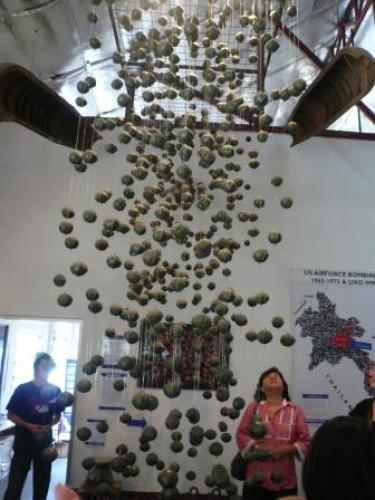
|
|
|
カテゴリ:ラオスへようこそ
 親爆弾から放たれた子爆弾の様子↑(2009年6月9日、ビエンチャン特別市) (癒しの国ラオス70からの続き) また、ラオスにはクラスター爆弾が本格的に使われた。 クラスター爆弾は1個の親爆弾が爆発すると中に収納されている数千個の子爆弾が広い範囲にばらまかれるというものだ。 しかも、子爆弾は不発弾になる率が高く、それが、今でもたくさんラオスに残っているのだ。 不発弾による死亡事故は後を絶たず、年に300人以上の犠牲者が出ている。 (続く) 【Bon appétit !】 メコン川周辺の森林減少 Southeast Asia's Lower Mekong region is set to lose a third of its natural forests in the next two decades, according to a report by the Worldwide Fund for Nature. Forestry experts blame the current pace of deforestation on governments’ undervaluing forestry resources. The Worldwide Fund for Nature report, titled "Ecosystems in the Greater Mekong," said between 1973 and 2009 lower Mekong countries chopped down almost a third of their forests for timber and to clear land for agriculture. Burma and Laos lost 24 percent of their forest cover. Cambodia lost 22 percent of their forests, while Thailand and Vietnam cleared 43 percent of their trees. "Core forests," a three-kilometer square area of uninterrupted forest, have dropped from 70 to 20 percent of total forest area The conservation group says the pace of deforestation is accelerating, and countries risk losing a third of their remaining trees by 2030. Geoffrey Blate is a regional advisor on ecology for the Worldwide Fund for Nature in Bangkok. He said it appears that Myanmar, Cambodia, and Laos are really sort of the hot spots for deforestation right now. (2 May 2013)
お気に入りの記事を「いいね!」で応援しよう
[ラオスへようこそ] カテゴリの最新記事
|